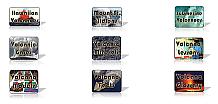Obstacles:
Guidelines for Planning
:
The guidelines below can help us as we develop interdisciplinary lessons.
- Formulate a goal statement which indicates the principle(s) or concept(s) to be understood at the completion of the lesson. What are the primary pieces of information or concepts that you want students to understand? Often, interdisciplinary lessons do not concentrate on the mastery of specific skills. By their very nature, these lessons usually focus on the application of skills and knowledge to novel situations. For this reason, goals of interdisciplinary lessons will usually involve helping students understand how the skills and knowledge they possess can be combined to accomplish a task, discover a solution, or explain a situation.
- Select the primary content base which will serve as the catalyst for instruction. Often, the content base will be determined by the text. There are times, however, when your goal necessitates the use of other, ancillary materials. In either case, determine the primary vehicle which will drive the instruction (e.g., a work of art or literature, a scientific or mathematical principle, an event or era in history, etc.)
- Identify events, discoveries, and writings within other disciplines that relate to the primary content base in a meaningful way. Through talking with colleagues and brainstorming on your own, consider information in other disciplines that seem to relate to the primary content. At this point, you may find it helpful to look at the table of contents in the textbooks you will be using. However, don't discount your own expertise, the films or plays you've seen, the books or magazine articles you've read, and your life experience.
- Determine the key points of intersection between the disciplines which correspond to the established terminal goal of instruction. As you investigate each cross-discipline idea in more depth, keep your terminal goal well in mind. It is often the case that we become so enthralled in the idea itself that we lose sight of our major instructional intent. While this is intellectually enjoyable, it is a time-consuming luxury that few of us can afford. Some ideas will probably need to be discarded, either because they are too complex, or because they do not fully address the goal. Other ideas may be so compelling and enlightening that you may want to revise the terminal goal to reflect new insights you have gained.
- Formulate instructional objectives. Again, it should be noted that most interdisciplinary lessons will not focus on the mastery of specific skills. Nevertheless, it is important to determine what you expect your students to be able to do when they have completed the lesson. As in other instructional planning, objectives serve as the springboard for the development of the instructional strategies and activities you will use.
- Identify the necessary prerequisite knowledge that students must possess in each discipline area you will address. Interdisciplinary instruction can fall apart if students lack knowledge of key principles or concepts within each discipline. Carefully consider the prerequisite skills students must have before they can successfully accomplish the objectives you have set forth. Sometimes, missing skills or pieces of information can be taught rather quickly. However, when this is not the case, it will be necessary to revise the interdisciplinary content.
- Formulate instructional strategies which will compel students to use their knowledge in one discipline to better understand and appreciate another. Students are not used to activating their knowledge in one discipline while studying another. For this reason, it is important to develop activities which require this transfer in a purposeful way. Depending upon the content and timeframe of instruction, you may want to use conceptual mapping, in-class debates, group projects, and/or a variety of discovery techniques to accomplish your goal. The critical component of interdisciplinary lessons, as in most instruction, is active and invested participation.
Conclusion:
***
Editor's Note: Lesson outlines in A Living Laboratory typically show a list of content areas to which the lesson may pertain. It is our hope that teachers will be inspired by this curriculum to team across the content areas, giving students increased opportunity to establish meaningful connections between learnings in one subject and learnings in another.

Education Main

Back To VolcanoWorld Home